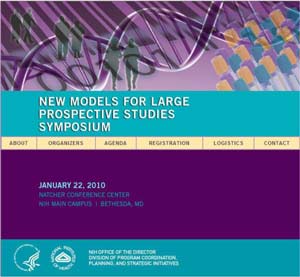Details
Contact
United States
Meeting Summary
Main Objectives
- What is a clinically meaningful and scientifically valid primary outcome for effectiveness trials on substance abuse treatments?
- What is the most appropriate approach (e.g. instrument, algorithm, or procedure) for capturing that outcome?
Expectation from Meeting
To reach a consensus on:
- What we know today, and therefore what doesn't need to be re-addressed.
- The key issues needed to fill important gaps in our scientific knowledge.
Why is this important?
- So that we collect and analyze data on clinically meaningful outcomes at critical time points in the most cost-effective manner
- So that we compare treatment effectiveness across trials based on a common scale
- So that we conduct secondary analyses across trials based on common elements
- So that we don't revisit the same issues over and over again every time we design a new trial
Two Different Harmonization Issues
- (Drug abuse) Science harmonization, the focus of this NIDA Science Meeting
- Operational harmonization, i.e. standardization of instruments, questionnaires, case report forms, etc.
Agenda
- Introduction
- Alcohol Experience
- Tobacco Experience
- Mental Health (Depression) Experience
- History of Outcomes in Substance Abuse Effectiveness Trials
- Panel I: State of the Science in Assessing Drug Use in Clinical Research: Biological Measures
- Panel II: State of the Science in Assessing Drug Use in Clinical Research: Self-Reported Measures
- Panel III: Primary Outcome
- Panel IV: Other Important Measures to Consider
Meeting Consensus

- Different studies with different goals, treatment aims, and target populations necessitate different outcomes.
- Drug use, measured by self-report and biological test, is one strong candidate for primary outcome.
- But consequences of drug use, e.g. psychosocial functioning, quality of life, criminal justice involvement, may also be as important.
Moving Forward
- "Operational harmonization" helps "science harmonization" by evaluating assessment tools across studies
- Conduct long-term follow-up studies to identify short-term predictors of long-term outcomes, and to better understand which are important
- Analyze CTN data currently on CTN's Public Data Share (22 studies) based on common instruments
- Plan another workshop in 2-3 years, but with results from analyses
How Should NIH Approach Future Prospective Cohort Studies
- Ensure future studies, including disease-specific studies, address widest possible range of outcomes
- Strong leadership is essential
- Use standardized measures to permit diverse studies to be combined (and that could start NOW)
- Establish consents that allow for broad research use and data sharing
- Maximize cost-efficiency where appropriate by:
- Exploring centralized recruitment and exam models
- Considering lower recruitment yield if associations rather than prevalence are primary objective
- Utilizing electronic records
